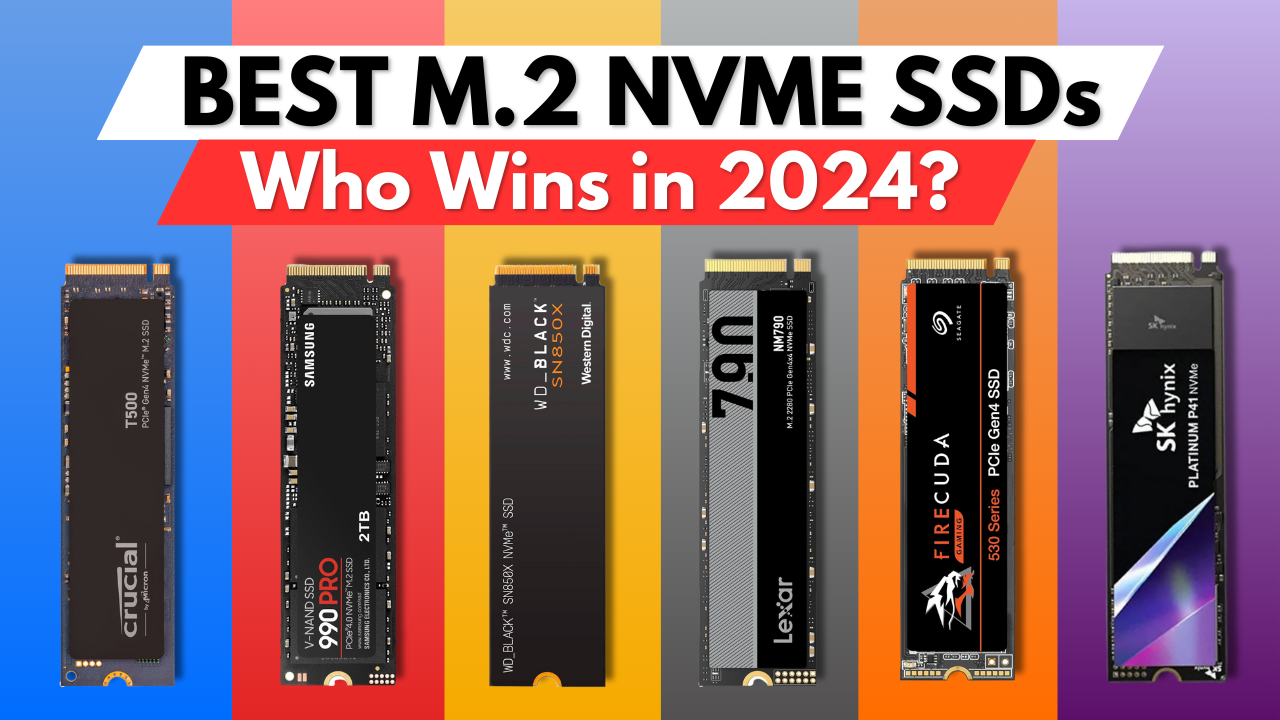Disclaimer: We may earn affiliate commission from qualifying purchases at no extra cost to you.
Discover unparalleled gaming performance with the Best M.2 NVMe SSDs for Gaming of 2024. These cutting-edge storage solutions offer lightning-fast read/write speeds, low latency, and ample storage capacity, ensuring smooth gameplay and rapid load times. Elevate your gaming experience to new heights with the top-rated M.2 NVMe SSDs leading the way in 2024.
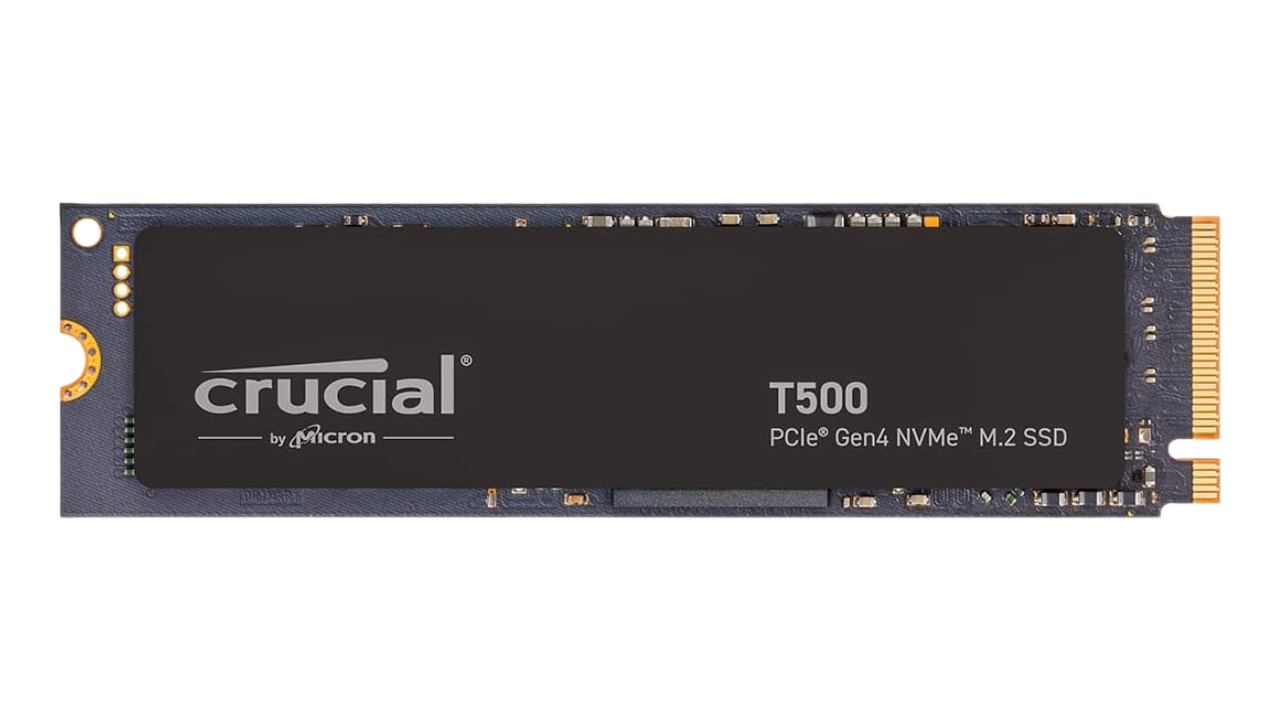
Crucial T500
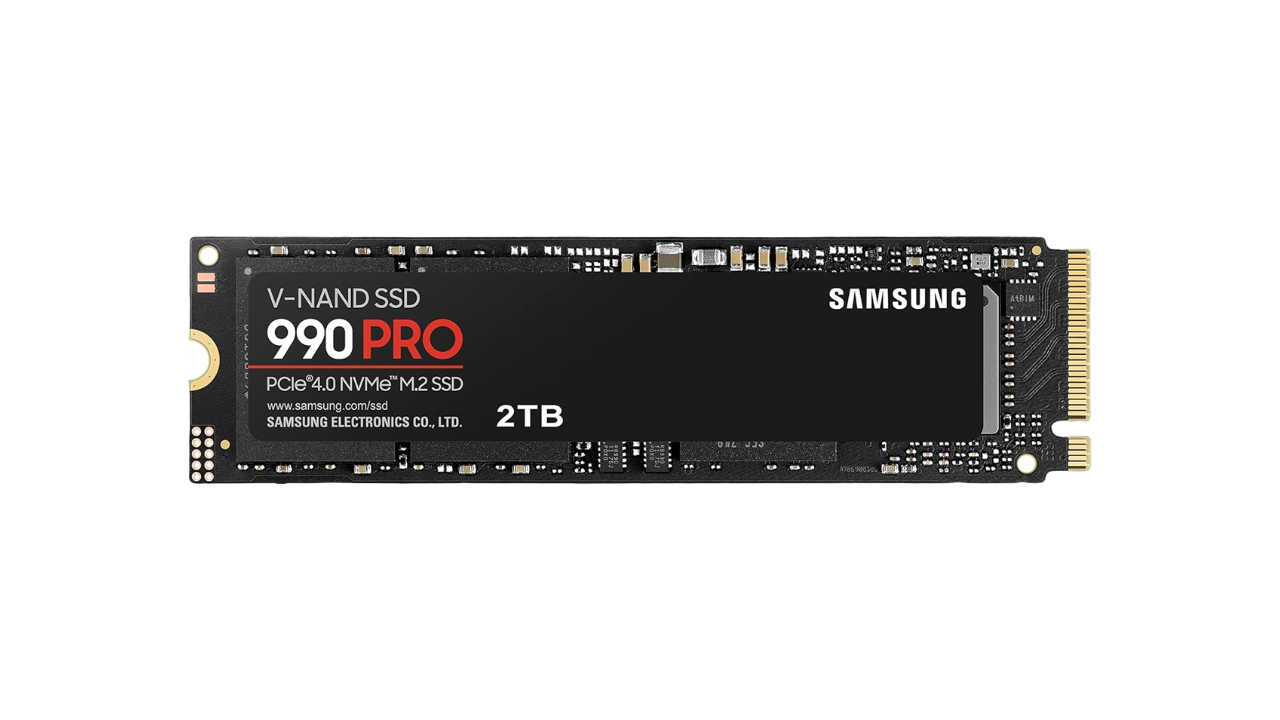
Samsung 990 Pro
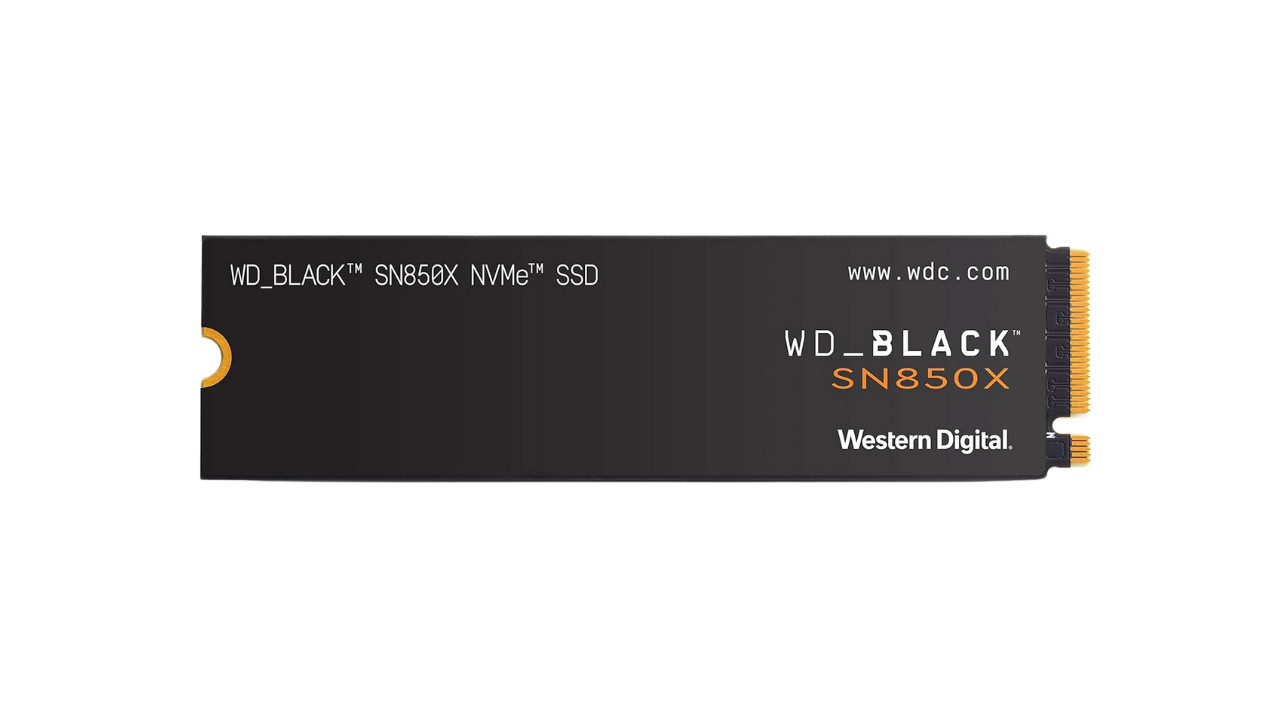
WD Black SN850X
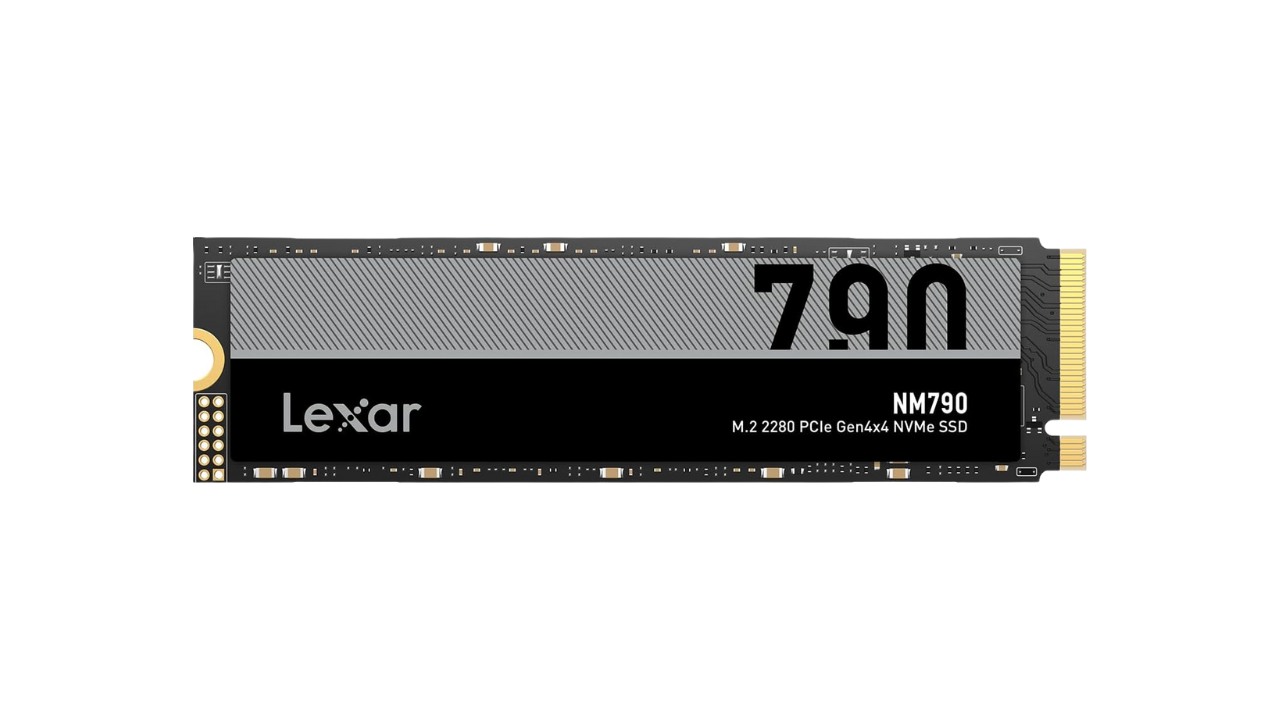
Lexar NM790
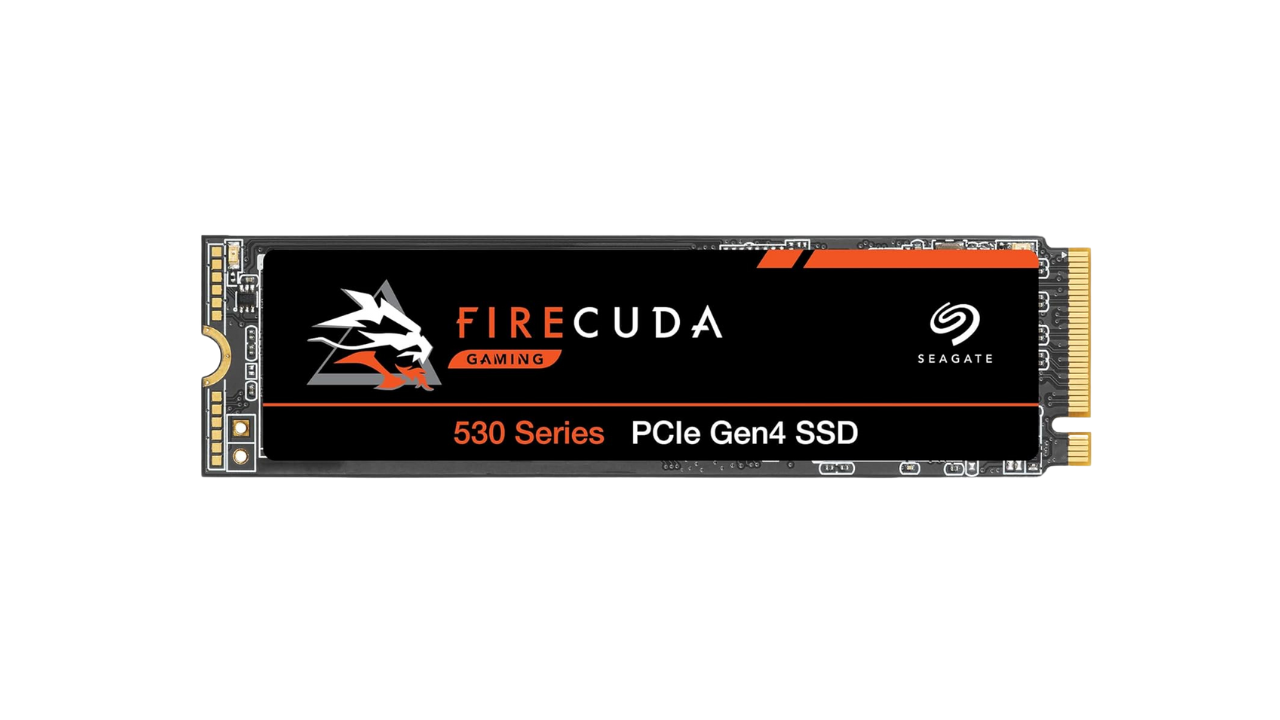
Seagate FireCuda 530

SK Hynix Platinum P41

The first one on our list is the Crucial T500. The T500 stands out as a compelling option in the realm of PCIe 4.0 SSDs, demonstrating excellent performance. Its affordability, compared to similar NVMe SSDs, positions it as a strong choice for users seeking value for their money.
One notable feature of the T500 is its use of a Phison E25 controller and 232-layer Micron TLC NAND, coupled with 1GB of DRAM per terabyte of capacity for primary caching. This configuration contributes to its commendable performance, particularly in terms of random access and 4K performance. The presence of DRAM, as opposed to the Host Memory Buffer (HMB), enhances the drive’s responsiveness, making it a favorable choice for running operating systems.
The T500 is available in 500GB, 1TB, and 2TB capacities. Additionally, there’s an option for a low-profile heatsink available for the 1TB and 2TB models. The inclusion of an optional heatsink, particularly compatible with PS5, adds a thoughtful touch to its design.
Performance-wise, the T500 lives up to its claims, delivering read speeds of 7,445MB/sec and write speeds of 6,991MB/sec. However, it is noteworthy that a heatsink is essential to prevent throttling, a common requirement for PCIe 4.0 SSDs. Without a heatsink, temperatures soared, leading to a drop in speed. Yet, with proper cooling measures, the T500 showcased peak performance, affirming its status among the fastest PCIe 4.0 SSDs available.
While the T500 achieves remarkable speeds in various tests, it’s essential to note its limitations. The drive experiences a significant slowdown when the secondary cache is exhausted during sustained writes. Despite this, the recovery time is commendable, and the drive maintains solid performance even with limited capacity.
In conclusion, the Crucial T500 SSD presents a compelling option for users seeking a well-rounded Gen 4 SSD. Its performance, efficiency, and thoughtful features make it a strong successor to its predecessors, with the potential for even greater appeal aftermarket adjustments.

Next up, we have the Samsung 990 Pro. The 990 Pro SSD stands as a testament to the pinnacle of Gen 4 SSD performance, showcasing an impressive victory lap in the realm of PCIe 4.0 technology. In a market saturated with options, this M2 SSD has successfully positioned itself as a top-tier choice for both professional users and avid gamers.
This SSD available in 1TB, 2TB, and the recently introduced 4TB variant, caters to users limited to PCIe 4.0 interfaces, which are still prevalent in many systems. While the market transitions to PCIe 5.0, the 990 Pro remains a compelling choice for those seeking the fastest drive within the confines of PCIe 4.0.
Following the success of its 2TB predecessor, the 4TB model introduces the latest 8th generation Samsung V-NAND technology and an enhanced controller, catering to users with demanding workloads and a need for extensive storage.
The drive’s performance is top-tier, excelling in multiple tests. The sequential read and write speeds, reaching up to 7,450 MB/s and 6,900 MB/s, respectively, push the limits of the PCIe 4.0 interface. It sets new standards for IOPS with an astonishing 1.6 million for random reads and 1.55 million for random writes. The Total Bytes Written (TBW) is substantially increased to 2,400TB, enhancing its endurance for prolonged usage.
The inclusion of a specialized heatsink variant, with customizable RGB lighting controlled by Samsung’s Magician Software, enhances thermal regulation during demanding tasks. While the device tends to run hot, the heatsink option provides a solution for temperature management, contributing to the overall reliability of the SSD.
Overall, The Samsung 990 Pro is a game-changer for creative professionals, enhancing sequential writing and speeding up tasks like video editing. Its compatibility with PS5 adds versatility, making it suitable for gaming PCs and consoles. While not the most budget-friendly, the 990 Pro’s exceptional performance, reliability, and features justify its status as a top-tier SSD investment.

The WD Black SN850X is on our list as well. The SN850X proves to be a formidable addition to the consumer gaming NVMe SSD line, succeeding the impressive SN850. Boasting enhanced performance and innovative features, this SSD is a direct successor that pushes the boundaries of gaming storage. The SN850X’s design maintains the sleek aesthetic of its predecessor, with a black, single-sided design and white-orange text.
With capacities ranging from 1TB to 4TB, the PCIe Gen4 M.2 drive stands out with optional RGB lighting and a heatsink, ensuring sustained peak performance during resource-intensive gaming sessions. The SN850X showcases substantial improvements over its predecessor, featuring up to 7.3GB/s read and 6.6GB/s write in sequential transfer speeds for the 2TB and 4TB models.
One of the key upgrades is the inclusion of WD’s signature armour-style cooling, addressing the heat concerns of the previous SN850. The revised thermal profile ensures that the SN850X runs much cooler, hitting just 58°C under sustained load compared to the old SN850’s toasty 77°C. This improvement is particularly advantageous for compact form factor rigs and gaming laptops.
The inclusion of Game Mode 2.0, while deemed a bit gimmicky, aims to enhance the gaming experience through predictive loading, adaptive thermal management, and overhead balancing. However, its efficacy remains to be fully validated.
The SN850X impresses with strong benchmarks and compatibility with gaming systems like the PS5, but it lacks 256-bit AES full-disk encryption, which could be a concern for users prioritizing data security.
Overall, the WD Black SN850X stands out as a top-tier PCIe 4.0 SSD, offering impressive capacity choices, enhanced speeds, and excellent gaming performance.

The next one on our list is Lexar NM790. The Lexar NM790 SSD emerges as a pleasant surprise in the world of PCIe 4.0 NVMe storage. This SSD excels in various aspects, making it a compelling choice for laptops, desktops, and even the PS5.
The NM790 employs a DRAM-less PCIe 4.0 design, utilizing a Maxio MAP1602 controller and 232-layer TLC NAND. While the lack of DRAM does impact random performance to some extent, the real-world transfers of the NM790 remain consistently impressive. The storage capacities offered range from 512GB to a substantial 4TB, with the latter being particularly noteworthy for its competitive pricing, making it an attractive option for users requiring ample storage space.
One standout feature is the NM790’s durability, with high Terabytes Written (TBW) ratings, particularly in smaller capacities. This longevity is an advantage, ensuring a reliable and long-lasting storage solution. The warranty coverage of five years or until reaching the rated TBW figure adds an extra layer of confidence for users.
However, it’s important to note that the NM790 does not support hardware-based encryption, which may be a consideration for users with specific security requirements.
In terms of performance, the Lexar NM790 lives up to expectations. With sequential reads and writes rated at 7,400MB/s and 6,500MB/s, respectively, it operates close to the limits of its Gen4 PCIe interface. Real-world testing confirms its reliability, achieving speeds of 7,106MB/s for sequential reads and 6,504MB/s for sequential writes—almost precisely in line with the advertised specifications.
However, it’s essential to note that the NM790 does exhibit slower random write performance, attributed to the absence of DRAM. Despite this, for the average user, the negligible impact on daily use may be outweighed by the SSD’s overall affordability and performance.
In conclusion, the Lexar NM790 is a standout choice for users seeking both massive storage capacity and high performance without breaking the bank.

Next up, we have the Seagate Firecuda 530. The Firecuda 530 emerges as a powerhouse in the realm of storage solutions, marking a significant stride for Seagate into the SSD market. Renowned for its traditional hard drives, Seagate brings its expertise to the forefront with the Firecuda 530, garnering acclaim for its stellar all-around performance.
Design-wise, Seagate opted for the widely-used Phison E18 controller, ensuring compatibility and reliability. The choice of Micron’s latest 176-layer TLC NAND memory adds to its appeal, promising improved speed and durability. The inclusion of a 2GB DDR4 cache, scaling with drive capacity, further enhances its performance.
The Firecuda 530 boasts a stellar all-around performance, making it a standout choice for gaming enthusiasts. The PCIe Gen 4 drive delivers impressive speeds, with a peak read of 7,300MB/s, and writes at 6,900MB/s according to Seagate’s claims. These figures are on par with other high-end SSDs using the Phison E18 controller, indicating a reliable and proven chipset.
The 2TB model includes 2GB of high-speed DDR4 cache, showcasing scalability with different capacity variants. A standout feature is the remarkable 2,550TB of write endurance, surpassing competitors like the Samsung 980 Pro and WD Black SN850.
Physically, the standard M.2 2280 form factor ensures broad compatibility with gaming PCs and laptops, including the PlayStation 5, making it a versatile option for different platforms.
However, the only drawback lies in the pricing. As expected from a high-performance SSD, the Firecuda 530 is predictably pricey. While its performance is top-notch, potential buyers may find more budget-friendly options, such as the WD Black SN850, which offers comparable performance at a slightly lower cost.
In conclusion, the Seagate Firecuda 530 is undeniably an excellent choice for those seeking peak storage performance. Its impressive speed, low operating temperatures, and exceptional write endurance make it a solid investment for gamers.

The last one on our list is SK Hynix Platinum P41. The P41 emerges as a powerhouse in the world of M.2 SSDs, boasting record-breaking scores in both general storage and gaming tests. As a pioneer in the consumer SSD space, SK Hynix leverages its extensive experience as a flash chip manufacturer to deliver exceptional performance with the Platinum P41.
The drive’s standout features include class-leading all-around performance, competitive sustained workload performance, and remarkable power efficiency. It has sequential read and write speeds of 7,000 MBps and 6,500 MBps respectively, along with impressive random read and write IOPS of up to 1.4 million. The AES-256 encryption adds a layer of security, catering to users with data protection concerns.
The drive’s construction on an M.2 Type-2280 form factor with SK Hynix’s own 176-layer TLC NAND flash and Aries controller contributes to its robust performance. Particularly noteworthy is the 2TB capacity, offering an attractive list price per gigabyte compared to competitors.
Durability ratings, expressed in terms of lifetime write capacity, align with other high-performance TLC-based SSDs in the market. SK Hynix supports the Platinum P41 with a five-year warranty or until the drive reaches its rated TBW figure, showcasing confidence in its longevity.
One notable feature of the P41 is its competitive pricing, making it a super-value M2 SSD in the market. However, potential buyers should be aware that a heatsink is not included, which may impact thermal performance under heavy usage. Nevertheless, this minor drawback can be easily addressed by users who can add their own heatsink.
In conclusion, the SK Hynix Platinum P41 exceeds expectations, delivering a winning combination of performance, efficiency, and competitive pricing.
In 2024, the gaming landscape will see a surge of high-performance M.2 NVMe SSDs that redefine storage speed and reliability. Among these, certain models stand out as the best for gaming, offering lightning-fast read and write speeds to minimize loading times and maximize gameplay performance. These top contenders boast ample storage capacities and robust endurance ratings, ensuring longevity and durability under heavy gaming usage. With advanced cooling solutions and firmware optimizations, they maintain optimal performance even during intense gaming sessions. In 2024, these top-rated M.2 NVMe SSDs for gaming set new standards for storage excellence, providing gamers with the speed and reliability they need to stay ahead in the virtual world.

